You’re striving to optimize your conversion rates, but do you focus on short-term wins or long-term growth? It’s a tough call.
In this article, we’ll explore why it’s vital to balance both strategies for your CRO’s success. You’ll discover effective measures for immediate results and learn how to sustain your focus for the long haul.
Let’s dive into the challenges and triumphs of balancing short-term versus long-term CRO focus.
Table of Contents
ToggleKey Takeaways
- Balancing short-term and long-term CRO strategies is essential for sustained growth.
- Quick wins in CRO provide immediate results but may not be sustainable in the long run.
- Long-term CRO strategies require investing time and resources into understanding the audience deeply and aligning goals with market trends.
- Utilizing big data analytics, AI, personalized recommendation systems, and aggressive testing culture can contribute to both short-term wins and long-term improvements in CRO.
Understanding Short-Term and Long-Term CRO Strategies
It’s crucial to understand the differences between short-term and long-term CRO strategies to effectively balance your focus.
Short-term CRO strategies often involve quick, tactical changes that drive immediate results. You might tweak your website design, optimize landing pages, or adjust ad copy to boost conversions. These tactics can yield fast returns but aren’t typically sustainable in the long run.
On the flip side, long-term CRO strategies are about building a robust foundation for sustained growth. You’re looking at improving overall user experience, refining your marketing message and brand positioning, or enhancing customer journey mapping. It’s not about quick fixes; it’s about investing time and resources into understanding your audience deeply and tailoring a strategy that caters specifically to them.
Balancing both is key. While short-term wins can give you an immediate boost and help fuel momentum, they should complement rather than replace long-term strategies that will ensure steady growth over time.
Understanding this dynamic helps you make informed decisions on where to allocate your resources for maximum effectiveness in achieving your conversion goals.
Importance of Balancing Short-Term and Long-Term CRO Focus
Understanding how to prioritize various conversion rate optimization strategies can significantly impact your business’s success. You need a balance – short-term tactics for immediate results, and long-term strategies that’ll ensure sustained growth.
Don’t underestimate the importance of quick wins in CRO. They’re not just boosts for your conversion rates—they also generate vital data you can use to refine your long-term strategies. Testing different landing pages, tweaking CTAs, or improving page load speeds will provide instant feedback on what works and what doesn’t.
However, don’t get too caught up in these short-term gains that you neglect long term planning. It’s crucial to invest time into understanding customer behavior, refining your value proposition, and building a strong brand identity. These aren’t things you can do overnight—they require consistent effort and patience.
Balancing both short-term and long-term CRO focus is like maintaining a good diet; it requires the right mix of nutrients (quick wins) for immediate energy and sustenance (long term strategies) for overall health. If you manage this balance effectively, you’ll see improvements not only in conversions but also in customer loyalty and business growth.
Effective Measures for Short-Term CRO Success
Implementing quick A/B testing on your website can significantly boost immediate conversion rates, marking a crucial measure for prompt CRO success. It’s an effective tactic to determine what elements of your site work best for your target audience. By comparing two versions of a webpage, you’re able to discern which performs better in terms of driving conversions.
Additionally, consider focusing on the visibility and clarity of your call-to-action (CTA). It’s vital that visitors know exactly what step they’re supposed to take next. Whether it’s signing up for a newsletter or purchasing a product, make sure your CTA is compelling and easy to spot.
Lastly, don’t overlook the importance of optimizing page load speed. Even minor delays can lead to significant bounce rates. If pages load quickly, users are more likely to stay on-site and convert.
In short-term CRO efforts, it’s about making quick wins while maintaining quality user experience. However, remember that these measures should not overshadow long-term strategies but rather complement them for holistic growth. Understanding this balance will set you up for both immediate and future success in conversion rate optimization.
Ways to Sustain Long-Term CRO Focus
You’re about to delve into the complexities of long-term strategy development and the barriers that come with maintaining focus.
It’s a challenging journey, one where you’ll need to analyze your goals, strategies, and pitfalls effectively.
You’ll gain insight into how to sustain focus in your Conversion Rate Optimization (CRO) efforts over time— understanding not just what needs to be done but also why it’s vital for your success.
Long-Term Strategy Development
In developing your long-term strategy, it’s essential to keep a clear vision of your company’s future. You’ve got to align your strategic goals with the changing market trends, customer preferences, and competitive landscape.
Remember, a well-crafted strategy isn’t just about meeting current needs; it’s about anticipating future ones too. You don’t want to be left behind because you didn’t plan ahead sufficiently.
Think of this as a chess game – you’re not just planning one move ahead, but several. It’s important that each move supports your overall objectives and strengthens your position in the market.
Maintaining Focus Challenges
Maintaining focus can be quite a challenge, especially when there’s constant pressure to adapt and evolve. As a CRO, you’re tasked with balancing short-term gains against long-term strategy. It’s not easy to strike the right balance.
You might find yourself pulled towards the immediate demands of day-to-day operations, leaving strategic planning on the backburner. However, it’s essential you don’t lose sight of your long-term objectives. They are your company’s guiding star, providing direction in an ever-changing business landscape.
Yes, flexibility is crucial but not at the expense of losing focus on your primary goals. Remember that while quick wins can bring immediate gratification, they won’t necessarily secure sustainable growth for your company in the long run.
Challenges in Balancing Short-Term and Long-Term CRO Focus
Balancing short-term and long-term CRO focus isn’t always easy due to various challenges that may arise. You might find it difficult to prioritize actions that yield quick wins versus those that create lasting value in the longer term.
For starters, there’s the resource allocation challenge. How do you distribute your time, energy, and budget between immediate tasks and long-range goals? You’re constantly juggling demands for instant results with the need for sustainable growth strategies.
Complexity is another hurdle. Long-term projects often require intricate planning and execution skills compared to short-term ones. It involves a deeper understanding of customer behavior trends over time – which isn’t an easy feat.
Then there’s uncertainty – the Achilles heel of any long-term strategy. The further out your plans extend, the more variables come into play, increasing the risks of unforeseen obstacles disrupting your course.
Lastly, maintaining momentum can be a struggle in itself when balancing both focuses. Short-term wins can boost morale quickly but keeping up enthusiasm for longer projects requires constant motivation.
In essence, striking a balance between short- and long-term CRO efforts involves managing resources wisely, embracing complexity willingly, navigating uncertainty confidently, and fostering sustained momentum consistently.
Case Studies: Successful Balancing of Short-Term and Long-Term CRO Focus
Let’s take a look at some successful case studies to understand how companies have effectively managed immediate and future conversion rate optimization efforts.
You’ll find that Amazon, an e-commerce giant, is a master at balancing their short-term and long-term CRO focus. They’re constantly running A/B tests on their website layout and features for immediate results. Simultaneously, they invest in big data analytics and AI to improve customer experience over time.
Next is Netflix, who’ve excelled in optimizing their personalized recommendation system. Initially, they focused on simple tweaks like adjusting thumbnail images based on viewer preferences for quick wins. However, they also understood the value of long-term strategies and invested heavily in machine learning algorithms to refine recommendations further.
Last but not least is Booking.com; they are known for their aggressive testing culture which allows them to make quick changes while ensuring these modifications contribute towards long term goals such as improving user interface design.
From these examples, it’s clear that achieving balance requires constant experimentation with immediate changes while investing in advanced technology or methodologies for future gains. Remember, there’s no one-size-fits-all approach; you need to identify what works best for your company’s unique needs.



